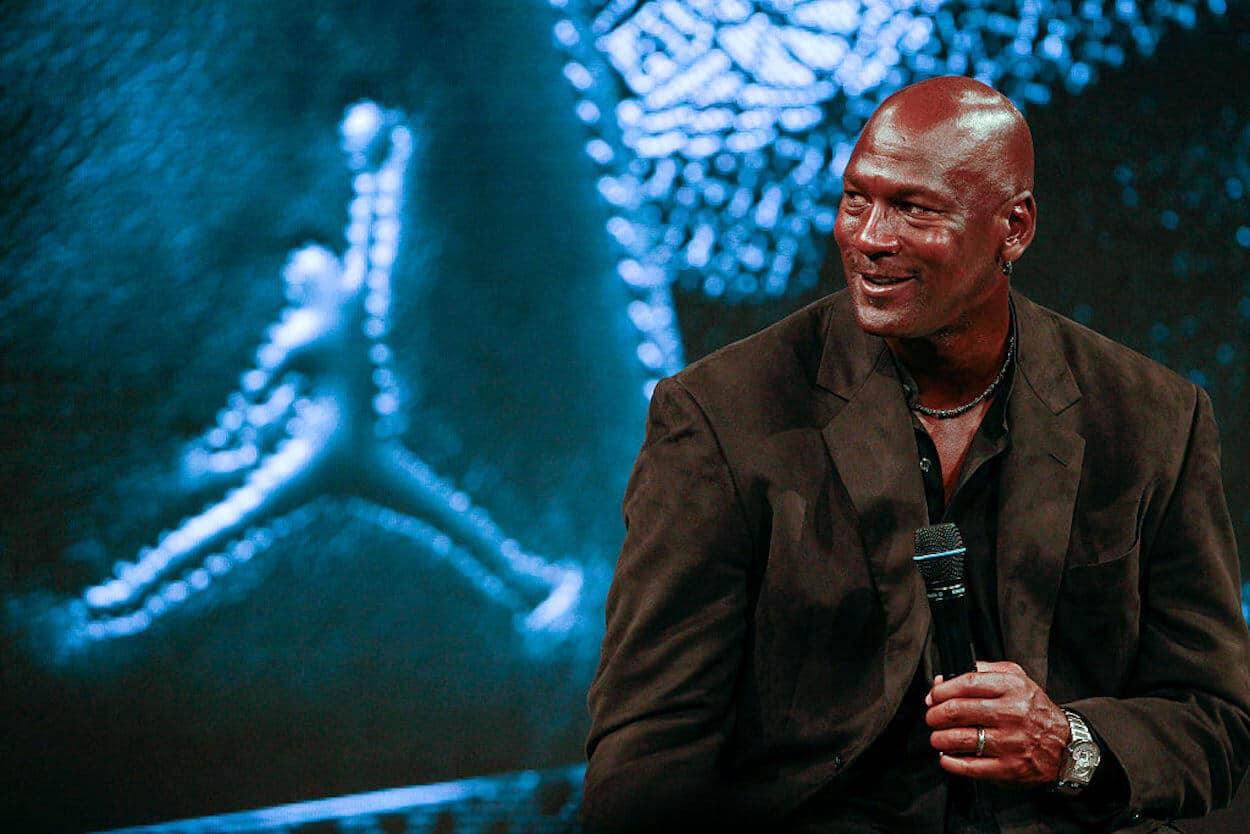NBA
The NBA Banned Air Jordans and Fined Michael Jordan $5,000 for Every Game He Wore Them

Michael Jordan. The name speaks for itself. Whether you’re a diehard basketball fan or have never watched a single game in your life, you know just how big of an impact the living legend had.
That impact, however, wasn’t just limited to on-court accomplishments. His Airness also shook up the world of sports apparel. He is the namesake, after all, of the Jordan brand, and when it comes to sneakers, it’s tough to overlook how MJ and Nike changed the game.
And while Air Jordans are incredibly commonplace today, did you know that Mike wasn’t able to wear his signature shoes in NBA action at first? The league even hit him with a fine every time he stepped onto the hardwood with the offending sneakers.
Let’s travel back in time and break it all down.
Michael Jordan almost didn’t partner with Nike, but the duo changed history

These days, Nike is a commercial juggernaut and a household name. If you’re a professional athlete, signing with the Swoosh is usually a no-brainer. Back in Michael Jordan’s day, though, things were a bit different.
At the time, signature shoes weren’t really a thing — some players like Walt Frazier had their own sneakers, but the practice wasn’t commonplace — but Nike was nowhere near the force it is today. MJ, for example, was a fan of Adidas and wanted to sign on with his preferred brand.
Then came the guidance that changed everything. Jordan’s mother told him that it would be rude to blow Nike off; he had to at least attend the meeting and hear them out.
During that meeting, MJ saw a highlight reel of himself set to The Pointer Sisters’ “Jump.” He was then presented with a red and black prototype of the iconic Jordan 1. It instantly became clear that this wasn’t going to be a standard endorsement deal; Jordan was the star of the show.
As you might expect, that prospect appealed to the young star. He signed on the dotted line, and the rest is history.
The Jordan 1 is iconic, but wearing them cost MJ $5,000 per game
Remember how we mentioned Michael Jordan seeing an early prototype of his Jordan 1s? Well, those shoes did more than simply resonate with His Airness. They also spoke to basketball and sneaker fans everywhere, who saw the bold red and black design as a marked departure from the previous idea of what basketball sneakers could be.
The NBA, however, was less keen on that color scheme.
Ahead of the 1984 NBA campaign, Jordan wore his red and black sneakers during a preseason game. Shortly after, he received a letter explaining that he had been fined $5,000 for violating the league’s uniform policy. At the time, rules specified that sneakers had to be 51% white, with the rest of the shoe matching the team’s color scheme.
Needless to say, black and red Jordans didn’t fit that criteria.
“We told Michael and Nike that whatever shoe he was wearing didn’t conform, so would they please change it,” then-NBA Commissioner David Stern said in the documentary One Man and His Shoes. “It became the shoe that was banned by the NBA, with the implication that it was because it made Michael such a good basketball player.”
That obviously wasn’t the case, but it didn’t stop Nike from seizing the opportunity.
Michael Jordan and Nike turned that ban into a branding opportunity
You might think that Nike saw the NBA fines as a disaster. They had come up with these cool shoes, after all, and Michael Jordan wasn’t allowed to wear them on the court. That potential setback, however, proved to be a gift.
Not only was the brand willing to pay the fines — that would theoretically allow MJ to keep wearing the sneakers, as they weren’t hurting his bottom line — but Nike embraced the idea that these shoes were banned.
“Expressing individuality through a unique style and not conforming to norms tends to resonate with people,” Thilo Kunkel, athlete brand development and monetization expert and associate professor, explained in a Temple University write-up. “It’s the perception of being a rebel and the anti-establishment Air Jordan 1 grew in popularity instantly.”
Beyond that, Nike created a commercial that drove home the fact that the sneakers were forbidden. As Stern noted, the implication was that the NBA, for whatever reason, didn’t want you to wear these shoes.
“On September 15, Nike created a revolutionary new basketball shoe,” the ad titled “Banned” explained. “On October 18, the NBA threw them out of the game. Fortunately, the NBA can’t keep you from wearing them. Air Jordans. From Nike.” Those words were set against Jordan himself, silently dribbling a basketball. The camera slowly panned down to show the offending shoes before two black bars hid them from view.
While that campaign may have been somewhat unconventional, it worked. Air Jordans sold like hotcakes, and fans everywhere couldn’t wait to see what sneakers His Airness would wear onto the court.
“Fans were looking to see if he would wear the forbidden shoes in a game. Cameras were on his sneakers, and the nation was talking about the Air Jordans. With no threat of a fine, there is no controversy,” Kunkel added. “It’s the best money invested by Nike.”
Since then, though, everything has changed. NBA footwear rules evolved — first full-color shoes were allowed, then theme nights were added, and now very few restrictions remain beyond obvious no-nos like third-party logos — and Nike is a power player on a global scale. Jordan has, of course, retired, but his namesake brand still resonates with fans and athletes alike.
And to think, there was a time when the Jordan 1s were essentially banned from NBA action.











